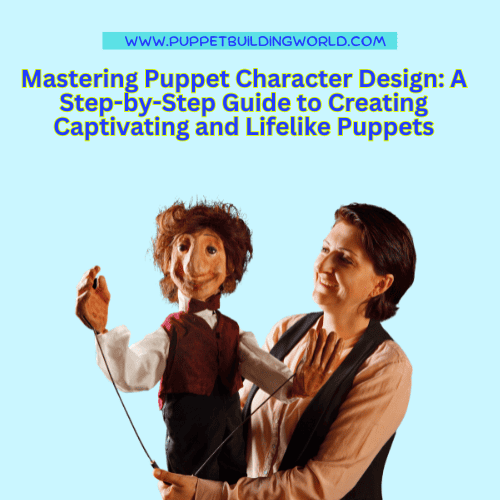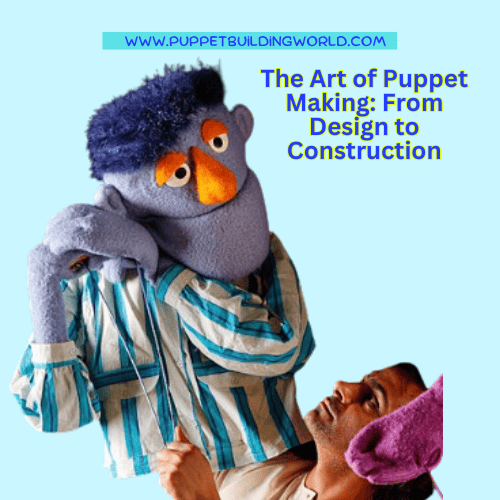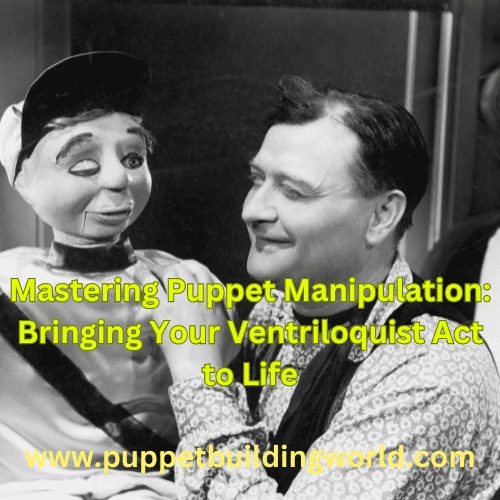Puppetry has long been a captivating form of storytelling, enchanting audiences of all ages with its magical blend of artistry and imagination. Behind the scenes, there are masterful puppet makers whose skill and creativity bring these inanimate figures to life. In this article, we’ll delve into the world of puppetry and highlight five popular puppet makers whose craftsmanship has left an indelible mark on the art form.
Table of Contents
Jim Henson:
No exploration of puppetry would be complete without mentioning the legendary Jim Henson. Founder of the Muppets, Henson revolutionized puppetry with his innovative techniques and endearing characters. From Kermit the Frog to Miss Piggy, Henson’s creations have become iconic, entertaining generations and proving that puppets can be as relatable as any human character.
Jim Henson: The Visionary Puppeteer Who Transformed Entertainment
Jim Henson, a name synonymous with puppetry and innovation, stands as a towering figure in the world of entertainment. Born on September 24, 1936, in Greenville, Mississippi, Henson’s journey into puppetry began at an early age. Fascinated by the art of puppet manipulation, he started experimenting with creating his own puppets while still in high school.
Henson’s breakthrough moment came in the late 1950s when he created the puppet characters for a local Washington, D.C., television show called “Sam and Friends.” This marked the inception of the Muppets, a term coined by combining “marionette” and “puppet.” The Muppets quickly gained popularity for their witty humor and endearing personalities, setting the stage for Henson’s illustrious career.
In 1969, Henson’s vision reached new heights with the debut of “Sesame Street.” Co-created with Joan Ganz Cooney, the groundbreaking children’s television program introduced a diverse cast of Muppet characters, including the iconic Big Bird, Ernie and Bert, and, of course, the beloved Kermit the Frog. Kermit, with his distinctive voice provided by Henson himself, became the Muppets’ unofficial spokesperson and a symbol of Henson’s creative genius.

The 1970s saw the birth of “The Muppet Show,” a variety show that showcased the Muppets and featured guest appearances from celebrities. The show’s success propelled Henson and the Muppets to international stardom. The irreverent humor, memorable characters, and Henson’s puppetry innovations, such as the innovative use of puppet rods and animatronics, set “The Muppet Show” apart as a groundbreaking production.
One of Henson’s most notable achievements was the creation of “Fraggle Rock” in 1983, a unique show that explored themes of diversity, friendship, and environmentalism. Henson’s commitment to using puppetry as a tool for education and entertainment was evident throughout his career, and “Fraggle Rock” was no exception.
Henson’s foray into filmmaking produced timeless classics like “The Muppet Movie” (1979) and “The Dark Crystal” (1982). The latter, a fantasy film co-directed by Henson, showcased his passion for pushing the boundaries of puppetry in the realm of cinema. The intricate puppet designs and innovative storytelling cemented Henson’s legacy as a pioneer in the art form.
Tragically, Jim Henson’s life was cut short when he passed away on May 16, 1990, at the age of 53. His death marked the end of an era, but his impact on puppetry and entertainment endured. The Jim Henson Company, founded by his family, continues to carry on his legacy, ensuring that the spirit of creativity, innovation, and joy that Jim Henson brought to puppetry lives on in the hearts of audiences worldwide.
Julie Taymor:
Renowned for her groundbreaking work in theater and puppetry, Julie Taymor is a visionary puppet maker and director. Her work on productions like “The Lion King” on Broadway showcased her ability to seamlessly blend puppetry with live performances. Taymor’s puppets are not just props; they are integral components of the narrative, adding depth and emotion to the stories she tells.

Julie Taymor, a luminary in the realms of puppetry and theater, has carved a unique niche for herself through her innovative and visually stunning productions. Born on December 15, 1952, in Newton, Massachusetts, Taymor’s artistic journey has been marked by a commitment to pushing artistic boundaries and redefining the possibilities of storytelling.
Taymor’s fascination with puppetry began during her studies at Oberlin College, where she developed a passion for the art form. She later honed her skills in Indonesia, immersing herself in traditional Balinese puppetry techniques. This cross-cultural experience greatly influenced her approach to puppetry, blending Eastern and Western influences to create a style that was uniquely her own.
One of Taymor’s defining moments came with her direction of “The Lion King” musical, which premiered on Broadway in 1997. Transforming an animated Disney film into a live theatrical experience was no small feat, but Taymor’s inventive use of puppetry and innovative puppet designs brought the story to life in a way that captivated audiences worldwide. The incorporation of life-sized puppets, such as the iconic Rafiki and the breathtaking puppetry of the wildebeest stampede, elevated “The Lion King” to a groundbreaking theatrical spectacle.
Taymor’s ability to seamlessly integrate puppetry into her productions extends beyond “The Lion King.” Her work on the Shakespearean adaptation “Titus” (1999) showcased her distinctive visual style and a willingness to experiment with unconventional storytelling techniques. The film’s surreal and fantastical elements, including intricate puppetry sequences, demonstrated Taymor’s commitment to pushing the boundaries of traditional filmmaking.
In addition to her puppetry prowess, Taymor has also made a significant impact on the stage with productions like “The Magic Flute” and “Spider-Man: Turn Off the Dark.” Her directorial approach often incorporates elements of mask work, puppetry, and visual symbolism, creating a sensory-rich experience for audiences.
Taymor’s accolades include becoming the first woman to win the Tony Award for Best Direction of a Musical for “The Lion King.” Her work has earned her widespread recognition and admiration, solidifying her status as a trailblazer in the world of puppetry and theater.
Beyond her success on stage and screen, Taymor continues to inspire future generations through her commitment to storytelling that transcends traditional boundaries. Her dedication to the integration of puppetry as a powerful storytelling tool has left an indelible mark on the landscape of contemporary theater and film, ensuring that Julie Taymor remains a visionary force in the world of visual storytelling.
Brian Froud:
For fans of fantasy puppetry, Brian Froud is a name that stands out. A master in the realm of creature design and puppet fabrication, Froud’s work on films like “The Dark Crystal” and “Labyrinth” has left an indelible mark. His intricate puppet designs, often inspired by folklore and mythology, transport audiences to fantastical worlds inhabited by creatures brought to life through his artistic prowess.
Brian Froud: Master of Fantasy Puppetry and Imaginative Worlds
Brian Froud, a luminary in the world of fantasy puppetry and creature design, has enchanted audiences with his otherworldly creations and intricate puppetry for decades. Born on July 5, 1947, in Winchester, England, Froud’s artistic journey has been marked by a profound connection to folklore, mythology, and a deep love for the fantastical.
Froud’s fascination with fantasy and the mystical began early in his life. His interest in fairy tales, mythology, and the works of artists like Arthur Rackham and Edmund Dulac fueled his creative spirit. After studying at the Maidstone College of Art in the 1960s, Froud embarked on a career that would see him emerge as a master in the realm of fantasy puppetry and illustration.
One of Froud’s most celebrated collaborations was with Jim Henson on the groundbreaking film “The Dark Crystal,” released in 1982. Froud served as the conceptual designer for the film, bringing to life a rich and immersive fantasy world inhabited by unique and fantastical creatures. His intricate puppet designs, inspired by various mythologies and his own imagination, contributed to the film’s timeless appeal.
Following the success of “The Dark Crystal,” Froud continued his collaboration with Henson on the cult classic “Labyrinth” (1986). Froud’s puppet designs, including the iconic creatures like the wise and mysterious goblin king Jareth, played by David Bowie, added a layer of depth and enchantment to the film. His ability to infuse puppetry with a sense of wonder and magic became a hallmark of his work.
Beyond his collaboration with Henson, Froud’s influence extended to various projects, including illustrating books such as “Faeries” (1978) and “Good Faeries/Bad Faeries” (1998) in collaboration with author and wife Wendy Froud. His illustrations, characterized by intricate details and a deep understanding of mythical aesthetics, have garnered him a dedicated fan base and earned him recognition as a preeminent fantasy artist.
Froud’s impact on the fantasy genre goes beyond puppetry and illustration; he has also been involved in film and television projects, contributing to the visual storytelling of mythical worlds. His commitment to capturing the essence of folklore and mythology through puppetry and visual art has left an enduring legacy, inspiring subsequent generations of artists and puppet makers.
As a testament to his influence, Froud’s work continues to be celebrated at art exhibitions, conventions, and through ongoing collaborations with artists and filmmakers who share his passion for bringing fantastical realms to life. Brian Froud’s contributions to fantasy puppetry have not only enriched the world of entertainment but have also elevated puppetry to an art form that transcends the boundaries of imagination.
Frank Oz:
The Puppetry Maestro Behind Iconic Characters An integral part of Jim Henson’s creative team, Frank Oz has made significant contributions to puppetry. Beyond his work with the Muppets, Oz has lent his talents to iconic characters like Yoda in the “Star Wars” franchise. His puppetry skills extend beyond the stage and into the realm of film, where he has brought to life characters that have become ingrained in popular culture.

Frank Oz, born Richard Frank Oznowicz on May 25, 1944, in Hereford, England, is a multifaceted artist known for his exceptional puppetry skills, directing prowess, and contributions to iconic characters that have become an integral part of popular culture. From his early days as a puppeteer with Jim Henson to his directorial successes, Oz has left an indelible mark on the world of entertainment.
Oz’s journey into puppetry began when he crossed paths with Jim Henson in the mid-1960s. Joining Henson’s creative team, Oz became an essential collaborator, providing the voices and puppetry for some of the most beloved Muppet characters. His most famous creation is the endearing and wise Yoda, the Jedi Master from the “Star Wars” franchise. Oz brought Yoda to life through puppetry and voice, creating a character that has become an iconic symbol of wisdom and the Force.
In addition to Yoda, Oz lent his talents to a multitude of Muppet characters, including the perpetually anxious Fozzie Bear, the exuberant Miss Piggy, and the grumpy but loveable Grover on “Sesame Street.” His versatility in puppetry and his ability to give each character a distinct personality contributed significantly to the success and enduring popularity of the Muppets.
Oz’s collaboration with Jim Henson extended beyond puppetry into filmmaking. He co-directed “The Dark Crystal” (1982) alongside Henson, showcasing his ability to translate puppetry into epic cinematic storytelling. The film’s intricate puppet designs and imaginative world-building underscored Oz’s commitment to pushing the boundaries of what puppetry could achieve on the big screen.
As a director, Oz found success in live-action films, particularly in the realm of comedy. His directorial credits include hits like “Little Shop of Horrors” (1986), “Dirty Rotten Scoundrels” (1988), and “What About Bob?” (1991). Oz’s directorial style, marked by sharp comedic timing and a keen understanding of character dynamics, further solidified his reputation as a versatile talent in the entertainment industry.
Frank Oz’s impact on puppetry and filmmaking extends beyond the stage and screen. His dedication to his craft, whether manipulating puppets or directing actors, has earned him the admiration of peers and audiences alike. While Oz may have stepped away from puppeteering in recent years, his legacy lives on through the enduring characters he brought to life and the laughter and joy he continues to evoke in audiences worldwide.
Basil Twist:
Basil Twist, an avant-garde puppeteer and director, stands at the forefront of innovative puppetry, pushing the boundaries of the art form with his mesmerizing and experimental creations. Born on April 6, 1960, Twist has become renowned for his unique approach to puppetry, seamlessly blending traditional techniques with a contemporary and imaginative flair.
Twist’s journey into puppetry began at an early age, and he honed his skills at the École Supérieure Nationale des Arts de la Marionnette in Charleville-Mézières, France. His training in European puppetry traditions laid the foundation for a career marked by an avant-garde spirit and a commitment to exploring the limitless possibilities of the puppetry medium.
One of Basil Twist’s groundbreaking works is “Symphonie Fantastique,” a water-themed puppetry production that premiered in 1998. Set to Hector Berlioz’s musical composition of the same name, the show features an underwater world created entirely with fabrics and other materials submerged in a giant water tank. The ethereal and dreamlike quality of the performance, combined with Twist’s mastery of puppet manipulation, captivated audiences and garnered critical acclaim, establishing him as a visionary force in puppetry.
Twist’s innovative use of materials and his ability to evoke emotions and narratives through abstract puppetry have set him apart in the puppetry landscape. His creations often transcend traditional storytelling, relying on visual poetry and the interplay of shapes and forms to convey profound and evocative messages.
In addition to his solo works, Basil Twist has collaborated with artists across various disciplines, including dance, theater, and opera. His puppetry designs have graced productions like “Peter and Wendy” (1996), a reimagining of J.M. Barrie’s classic tale, and the opera “Hansel and Gretel” (2007), where his puppets seamlessly integrated with the live performers, creating a magical and immersive experience.
Twist’s commitment to avant-garde puppetry extends beyond the stage. He has been involved in educational initiatives, sharing his expertise with aspiring puppeteers and contributing to the evolution of the art form. His influence has reached international audiences, and his work continues to be celebrated in prestigious venues and festivals around the world.
Basil Twist’s contributions to puppetry challenge preconceived notions, inviting audiences to reconsider the possibilities of the medium. Through his transformative and visionary approach, Twist has left an enduring mark on the world of puppetry, inspiring a new generation of puppeteers to explore the boundaries of imagination and creativity.
Conclusion:
These five puppet makers have not only mastered the craft of puppetry but have elevated it to an art form that transcends entertainment. From the whimsical worlds created by Jim Henson to the fantastical creatures envisioned by Brian Froud, each puppet maker brings a unique perspective and skill set to the stage. Their contributions have not only shaped the history of puppetry but continue to inspire a new generation of storytellers and puppet makers, ensuring that the enchanting art form remains vibrant and relevant in the years to come.












